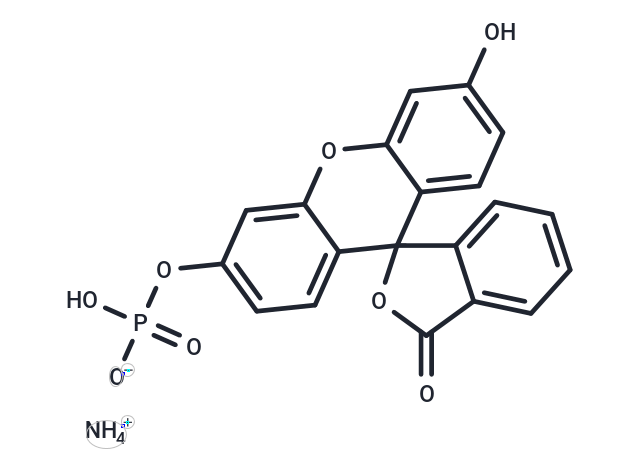Shopping Cart
- Remove All
 Your shopping cart is currently empty
Your shopping cart is currently empty

Fluorescein-diphosphat (ammonium) serves as a versatile dye, playing a crucial role in biological research. It aids in observing cell structures, tracking biomolecules, evaluating cell functions, differentiating cell types, detecting biomolecules, studying tissue pathology, and monitoring microorganisms. Its applications extend from fundamental research to clinical diagnostics. Additionally, dyes are used extensively in traditional fields like textile dyeing and in emerging areas such as functional textile processing, food pigments, and dye-sensitized solar cells.

| Pack Size | Price | Availability | Quantity |
|---|---|---|---|
| 10 mg | Inquiry | Inquiry | |
| 50 mg | Inquiry | Inquiry |
| Description | Fluorescein-diphosphat (ammonium) serves as a versatile dye, playing a crucial role in biological research. It aids in observing cell structures, tracking biomolecules, evaluating cell functions, differentiating cell types, detecting biomolecules, studying tissue pathology, and monitoring microorganisms. Its applications extend from fundamental research to clinical diagnostics. Additionally, dyes are used extensively in traditional fields like textile dyeing and in emerging areas such as functional textile processing, food pigments, and dye-sensitized solar cells. |
| Molecular Weight | 429.32 |
| Formula | C20H16NO8P |
| Cas No. | 197777-68-7 |
| Storage | Powder: -20°C for 3 years | In solvent: -80°C for 1 year | Shipping with blue ice. |

Copyright © 2015-2025 TargetMol Chemicals Inc. All Rights Reserved.